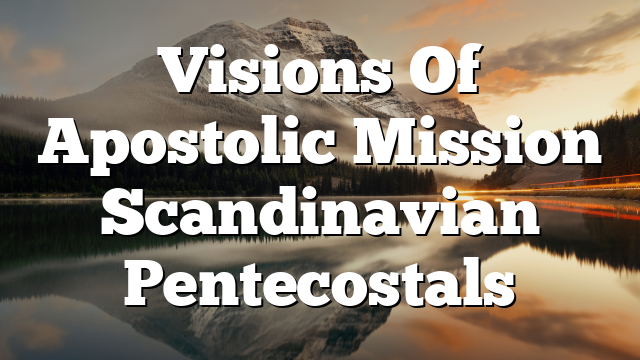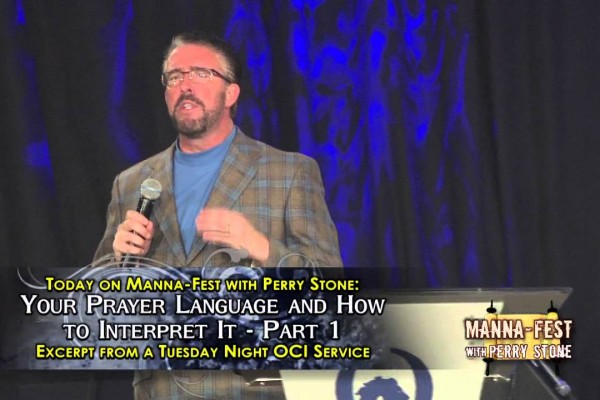Click to join the conversation with over 500,000 Pentecostal believers and scholars
Click to get our FREE MOBILE APP and stay connected
| PentecostalTheology.com



David Bundy, Visions of Apostolic Mission: Scandinavian Pentecostal Mission to 1935, Acta Universitatis Upsaliensis, Studia Historico-Ecclesiastica Upsaliensia 45 (Uppsala: Uppsala Universitet, 2009). xiii + 562 pp. [available from acta@ub.uu.se]
Tis book is the long awaited doctoral dissertation on Scandinavian Pentecostal Mission presented at Uppsala University in March 2009. Since 2002 the author has been the Librar- ian and Associate Professor of History at Fuller Teological Seminary. While studying at the Université Catholique de Louvain, Belgium thirty years ago, Bundy recognized Pente- costalism in Europe to be quite different to the Pentecostalism he had encountered in North America. An expert in Pentecostalism and in handling many languages, he has dem- onstrated his interest in the variety of Pentecostalism by a number of reviews of Pentecostal literature in Swedish, Norwegian, Dutch, German, French, Italian, Spanish, Portuguese, and Romanian. During his first visit to Scandinavia in 1981 he developed a special affinity for the Nordic expression of the Pentecostal faith. He collected materials, spent many months in libraries and archives, and interviewed key persons, which ultimately led to this dissertation under the supervision of Professor Ruth Franzén.
Scandinavian Pentecostal missionaries have played a major role in the expansion of global Pentecostalism. Bundy reckons that the total of Scandinavian Holiness and Pente- costal missionaries in China during the period 1907-1969 may outnumber that of North American Holiness and Pentecostal missionaries. Scandinavian Pentecostal missionaries have been highly influential in the successful formation of Pentecostalism in Brazil, as well as in other countries.
Swedish Pentecostalism has received a lot of attention by scholars both outside and inside the tradition, for instance E. Briem (1924), G.E. Söderholm (1929), Arthur Sundstedt (1969), and Carl-Erik Sahlberg (1977). Te Missions Institutet-Pentecostal Missionary Union and the Swedish Pentecostal Information Center at Kaggeholm made a joint effort to document the influence of Swedish Pentecostal mission. Tis project led by Jan-Endy Johannesson and Jan-Ake Alvarson resulted in a number of scholarly publications. As all of the above have been written in Swedish, the topic has not received the international atten- tion it deserves.
Bundy employs the findings of all of these and adds his own in depth research. By focus- ing on mission practice and theory Bundy builds on Allan Anderson’s, Spreading Fires: Te Missionary Nature of Early Pentecostals (2007), but brings another perspective to it. While Anderson’s work was restricted to the English language materials, by taking the Norwegian, Swedish, and Danish materials into account, Bundy presents a different picture. Bundy’s approach is to map the sources and relationships of the early Scandinavian Pen- tecostals, both synchronically and diachronically, for their significance to mission practice and theory. Tis required extensive archival research in each Nordic country. It appeared that networks centered on periodical publications were the most important for identifying ideas and influences. Unlike later Pentecostal periodicals when denominational boundaries restricted the flow of information, the early periodicals frankly write about the discussions and conflicts going on for all to read. Where Pentecostal historiography tends to focus on churches rather than on loose networks, Bundy’s method of cultural mapping, recognizing the importance of networks, enabled an analysis that transcends national boundaries and
© Koninklijke Brill NV, Leiden, 2011 DOI: 10.1163/157007411X554848
1
128
Book Reviews / Pneuma 33 (2011) 109-169
individual groups. Te mass of information gathered this way made it necessary to limit the period to the first decades up to 1935. A further limitation was to remove most of material about Finland, Denmark, and Iceland. Significant interviews were undertaken, but these did not help for the period up to 1935 presented in this study. Two personal archives, those of Tomas Ball Barratt and of Lewi Pethrus, were essential to this research.
Barratt and Pethrus are of course the most known figures for the beginning of Scandina- vian Pentecostalism. Bundy’s research, however, highlights many other influential leaders that are often ignored, such as Erik Andersen Nordquelle, C.M. Seerhuis, O.L. Björk, John Ongman, and Torvald Plum, like Barratt and Pethrus each editor of a periodical support- ing mission. Barratt came to Pentecostalism after his conflict over mission theory and prac- tice with the Mission Board of the U.S.A.’s Methodist Episcopalian Church. Barratt created the first European Pentecostal periodical, which served as a model for those that followed. His Byposten, initially started in 1904 to support his innovative mission in Kristiana (Oslo), reported Pentecostal events as of late 1906. After the name changed to Korsets Seir in 1909 it also was published in Swedish, Finnish, Spanish, and Russian. Most important for the early period in Sweden were John Ongman (of the Örebro Mission) and O.L. Björk. Lewi Pethrus only played a minor role in Swedish Pentecostalism up to 1916. Tis changed after he started the publication of Evangelii Härold, which became the dominant mission peri- odical. Just as to other Pentecostals around the world, mission was central to the early Pentecostal churches in Scandinavia.
Bundy argues that the Scandinavian Pentecostal churches adapted their patterns of mis- sion organization and praxis from Holiness, Baptist, and Pietist examples. Pentecostal churches were formed in the cultural space created by the Scandinavian Pietist, Holiness, and Baptist traditions. Tey were also influenced by their trans-Atlantic connections with North American Holiness Methodists, Free Methodists, and Baptists. Tese movements were reformist and often revivalistic. Pentecostal leaders used these traditions to help define Pentecostal perspectives and mission theory in Scandinavia. Primary among the models to approach mission was the Methodist missionary William Taylor. Taylor stood against the “Mission Board” approach of mainline American and European churches and advocated a “Pauline” self-supporting mission theory.
Bundy presents the story of the first decades of Scandinavian Pentecostal mission. Te priority often given to the American perspective — Bundy speaks of the “American meta- narrative” — is not sustained by this research. Te American experience had very little impact on Scandinavian Pentecostalism during this period. Te periodicals rarely published American Pentecostal authors and, if cited, it was to add support for positions already held. Bundy argues that the Scandinavian Pentecostal missionaries were more appreciative of the local culture and allowed for much more indigenous leadership and control, and was more egalitarian and showed more recognition for women ministry than missionaries from most other countries, which explains for their success.
Te quick growth led to a process of institutionalization between 1915 and 1922 both in Norway and in Sweden. Establishing Mission Boards for the sake of government recog- nition and efficiency provoked reactions and eventually led to conflicts and schisms. A visit to the U.S.A. in 1928 alarmed Barratt. He felt the revival had come to an end and was replaced by institutionalization. He went back determined to dismantle the similar national
2
Book Reviews / Pneuma 33 (2011) 109-169
129
organization forms in Norway and return the responsibility for mission to the local congre- gation. Barratt and Pethrus joined forces to abolish the forces of institutionalization. Te debate over mission raged in Norway during 1928 and 1930 and in Sweden between 1929 and 1934. At the end of this period the Pentecostal churches led by Barratt and Pethrus refocused on the Apostolic “Pauline Mission” theory and practice of William Taylor.
Bundy is a careful researcher. He obviously knows his material very well and his analysis of the data makes good sense. However I do question his interpretation of the relationship between Barratt and the German and English leaders. According to Bundy the discussion of Barratt’s proposal of an “Alliance” as a structure for cooperation was “blocked by the English and Germans” (233 and 245), which is not my impression when reading the Ger- man and English reports.
In the account of Barratt’s Spirit Baptism Bundy is able to add to our information by using multiple sources, but at one point I wish he would have conversed more with Barratt’s well known account in his When the Fire Fell (1927). In the latter Barratt does have a meet- ing with the Bishop Burt before leaving for New York (compare Barratt, 134 with Bundy, 171), and more important, Barratt changes his theological understanding of Spirit Baptism after his personal experience with speaking in tongues in November 1906. He then refor- mulates his earlier experience of a Spirit Baptism without tongues in October as an “anoint- ing.” In my opinion this should downplay the importance attributed to the treatise Toughts on Pentecost and the Gift of Tongues Barratt wrote nine days before, but Bundy does not seem to have taken this into consideration.
It is understandable that Bundy had to limit his research and stop where he did, but it does leave the reader wondering how the vision of the apostolic mission was carried on. Hopefully the author will find occasion to write a second volume toward this end.
Bundy is to be complimented for this impressive research that adds significantly to our knowledge of European Pentecostalism and of its mission practice and theory in particular.
Reviewed by Cornelis van der Laan Professor for Pentecostal Theology VU University Amsterdam, Te Netherlands C.vander.Laan@vu.nl
3


